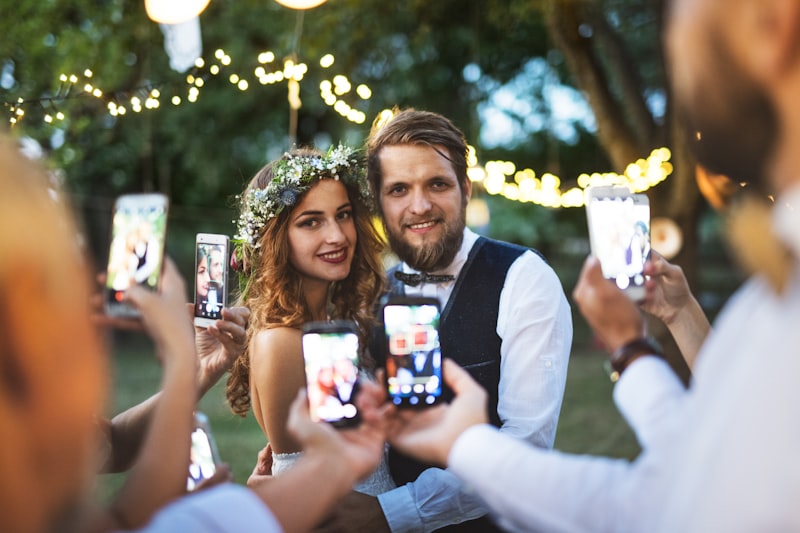Exploring the Contemporary Wedding Style Evolution: A Journey Through Time
Exploring the Contemporary Wedding Style Evolution: A Journey Through Time
Weddings have always been a significant cultural event, reflecting societal values, traditions, and individual preferences. The contemporary wedding style evolution illustrates how these expressions of love and commitment have transformed over the decades, adapting to modern influences and the desires of couples today. This article delves into the trends, designs, and significant changes in contemporary wedding styles, outlining what couples can expect in their nuptials.
The Dawn of Contemporary Weddings
The roots of contemporary weddings can be traced back to the mid-20th century when traditional wedding ceremonies began to incorporate modern elements. This period marked the shift from purely religious ceremonies to more personalized celebrations, tailored to the couple's preferences. The societal changes during this time—including the women’s liberation movement—significantly influenced wedding styles.
Personalization and Individuality
One of the hallmarks of contemporary weddings is the emphasis on personalization. Couples no longer feel restricted by conventional norms; instead, they embrace unique themes that resonate with their identities. From destination weddings to themed celebrations, couples are increasingly choosing to integrate their hobbies, interests, and diverse backgrounds into their ceremonies.
| Popular Themes in Contemporary Weddings | Description |
| Bohemian | An earthy, organic style that features natural elements and artistic decorations. |
| Minimalist | A clean, simple style focusing on essential elements and a neutral color palette. |
| Vintage | A throwback to past decades, often featuring retro décor and classic dresses. |
| Glamorous | Luxurious elements with an emphasis on opulence, sparkles, and high-end design. |
Each couple's vision for their wedding is often a reflection of their personalities and experiences, making each event distinctly its own.
Influence of Technology on Wedding Styles
The technological revolution has also played a significant role in the evolution of contemporary wedding styles. Advancements in social media and photography have allowed couples to showcase their celebrations in unprecedented ways. Couples can now capture candid moments and share them with a global audience in real-time.
Digital Invites and Wedding Websites
Gone are the days when paper invitations were the norm. Today, couples are leveraging digital invites and custom wedding websites. These platforms not only reduce costs but also incorporate multimedia elements such as videos and photos, making it easier for guests to connect with the couple's love story.

Social Media Influence
Platforms like Instagram and Pinterest allow couples to explore and curate ideas for their big day. This trend has led to an increase in DIY weddings, where couples take the reins on their décor and planning, further personalizing their events. Social media has also introduced trends like wedding hashtags and live streaming, which enable couples to include distant friends and family members in their celebrations.
Fashion Trends in Contemporary Weddings
Fashion also plays a crucial role in the evolution of contemporary wedding styles. Couples today are exploring a broader range of options for wedding attire, moving away from traditional choices.
Bridal Attire Innovations
Contemporary brides are increasingly opting for non-traditional wedding dresses that reflect their personal style. From sleek jumpsuits to colorful gowns and even two-piece sets, bridal fashion has become more diverse. Notable designers like Vera Wang and Monique Lhuillier are leading the charge with innovative designs that break away from classic silhouettes.
Groom's Fashion Evolution
Grooms, too, are embracing change with their wedding attire. While classic tuxedos and suits remain popular, many grooms are now exploring unconventional styles. This includes tailored vests, colorful blazers, and even themed costumes that align with the wedding's overarching aesthetic. The focus is now on comfort and individuality, allowing grooms to express their unique personalities.
Eco-Friendly Weddings: A Growing Trend
As modern couples become increasingly aware of environmental issues, eco-friendly weddings have emerged as a prevalent trend. This movement emphasizes sustainability and seeks to minimize carbon footprints. Couples are now opting for green weddings, which focus on local vendors, recycled décor, and organic food choices.
Benefits of Eco-Friendly Weddings
In addition to being environmentally responsible, eco-friendly weddings can also be more cost-effective. Couples can save money by reducing waste and focusing on simpler, sustainable choices. Moreover, sustainable practices enhance guests' awareness of environmental issues, fostering a sense of community and shared responsibility.
| Tips for Planning an Eco-Friendly Wedding | Description |
| Choose Local Vendors | Support your community and reduce travel emissions by working with local florists, caterers, and photographers. |
| Eco-Friendly Invitations | Go digital or use recycled materials for paper invitations. |
| Seasonal Flowers | Opt for flowers that are in season to reduce the carbon footprint associated with importing exotic varieties. |
| Digital Wedding Registries | Encourage guests to opt for digital gifts or experiences instead of physical items. |
Final Thoughts on Contemporary Wedding Style Evolution
The contemporary wedding style evolution showcases how weddings have transformed and adapted to modern-day needs and preferences. From personalized themes and digital innovations to eco-friendly practices and fashion trends, the modern wedding landscape is rich with possibilities that reflect the individuality of each couple.
For couples planning their wedding, it is essential to embrace creativity and authenticity. Consider your values and what truly matters to you as a couple; this will guide your decisions and result in a celebration that feels true to you. Remember that the beauty of your wedding lies in celebrating your love, surrounded by those you cherish.
As you embark on this journey, keep an open mind and be willing to adapt trends that resonate with you. After all, your wedding day should be a magnificent expression of your unique love story.
